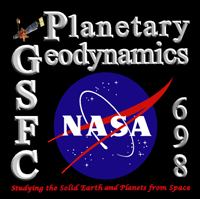

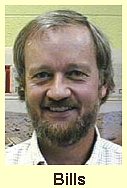 |
Bruce Bills studies how planets wobble. In two recently published papers, Bills describes how the obliquity (tilt of the rotation axis) for Mercury (below) and the Galilean satellites of Jupiter (below) changes over time . The work describes how the tilt and spin of a body interact with its non-circular motion about its primary, and how these relate to dissipation of internal energy due to tidal deformation. |
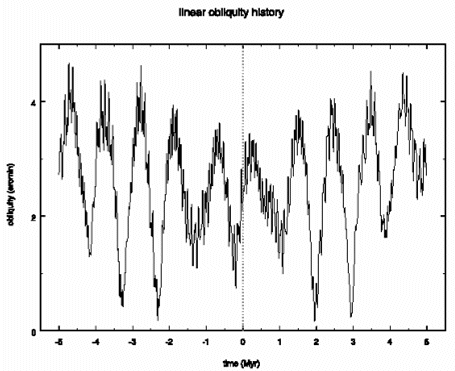
Calculated obliquity variations of Mercury
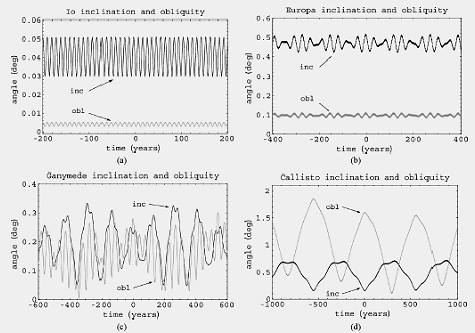
Calculated obliquity and inclination variations for Galilean satellites
Another recently published application of this "celestial mechanics" is how the Phobos eclipse season changes over time. Solar eclipses on Mars have been observed by the Mars Orbiter Camera (below), but Bills has worked out the details of where and when they will occur, and how that changes as the tilt of the rotation axis changes, as it does on long time scales.
Bills, B.G. and R. L. Comstock, Forced Obliquity variations of Mercury, Journal of Geophysical Research, vol. 110, E04006 (2005).
Bills, B.G. and R. L. Comstock, Spatial and temporal pattern of solar eclipses by Phobos on Mars, Journal of Geophysical Research, vol. 110, E04004 (2005).
Bills, B.G., Free and forced obliquities of the Galilean satellites of Jupiter, Icarus, 175, 233-247 (2005).
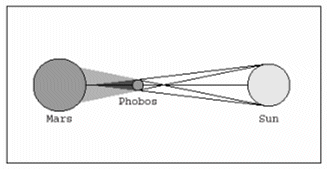
When tiny Phobos passes between the sun and the planet Mars (above), it can cast a shadow on the surface (below), as seen by the Mars Observer Camera.
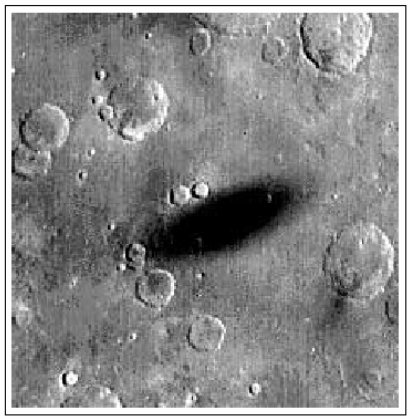
Contacts: Bruce Bills, GSFC Code 698, Bruce.G.Bills AT nasa DOT gov
![]() Back to Planetary Geodynamics Science Highlights
Back to Planetary Geodynamics Science Highlights
Responsible NASA official: Dr. Herbert Frey